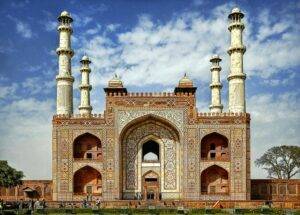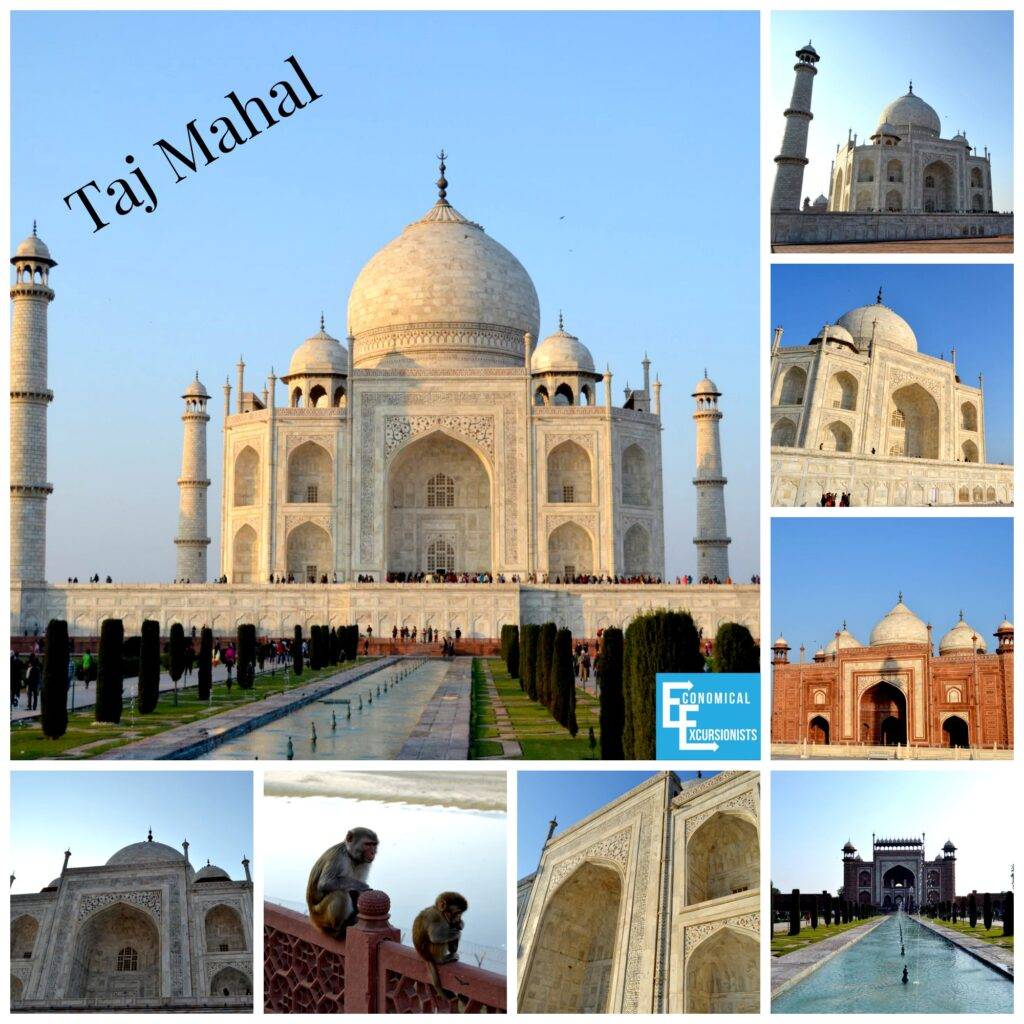
Tourist Attractions in Agra
Agra the city of Taj Mahal
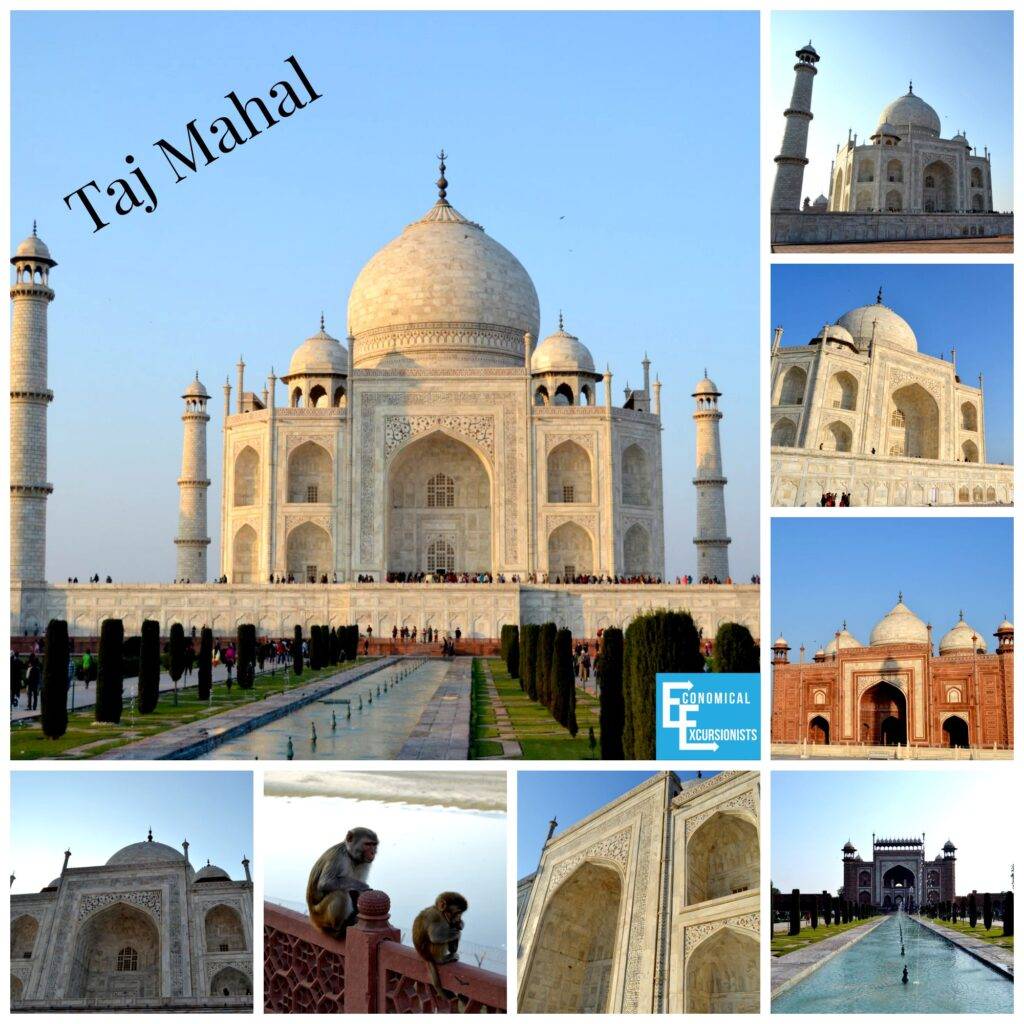
Agra has come a long way from the day when stories of the Mughal wealth and splendour surrounding its fairy tails courts were famous across the seven seas. Today it is like any other urban city of northern India, yet it is different because it retains its medieval essence. Its serpentine bylanes, old houses, markets, teeming with people and goods, take you back into a different age. Walking along the streets of Agra, it is quite likely that you will come across small dim-lit workshop where artisans claim to be descendants of ancestors who worked in the Mughal courts. Thousands of visitors from across the world come here every day to experience the marvels of the Mughal era and, in particular, the pristine beauty of the Taj Mahal and other ancient places, Itimad-Ud- Daulah, Sikandra, Red Fort and Fatehpur Sikri.
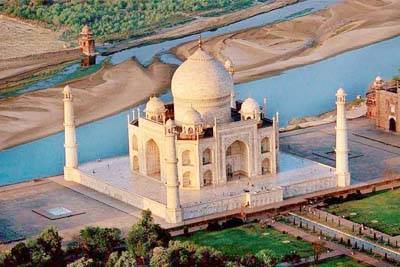
Taj Mahal
“A white marble tomb built in 1631 – 48 in Agra, seat of the Mughal Empire, by Shah Jehan for his wife, Arjuman Banu Begum, the monument sums up many of the formal themes that have played through Islamic architecture. Its refined elegance is a conspicuous contrast both to the Hindu architecture of pre-Islamic India, with its thick walls, corbelled arches and heavy lintels, and to the Indo-Islamic styles, in which Hindu elements are combined with an eclecticassortment of motifs from Persian and Turkish sources.”______ Marvin Trachtenberg and Isabelle Hyman Architecture: from Prehistory to Post-Modernism. p223
The Taj Mahal is considered the finest example of Mughal architecture, a style that combines elements from Persian, Indian, and Islamic architectural styles. In 1983, the Taj Mahal became a UNESCO World Heritage Site and was cited as “the jewel of Muslim art in India and one of the universally admired masterpieces of the world’s heritage.”
The Taj! An awe-inspiring poetry in marble stands high and serene by the banks of the River Yamuna is an inspiring result of the application of architectural and scientific research.
The tomb laid out in rectangular shape can be approached through an immense gateway with huge arch and alcoves strewn on either side that stands tall and erect, as though guarding something precious. Three other smaller gateways follow the red sandstone towers topped with domes in white marble together make a pretty picture.
The Taj is an experience of its own kind, while on the one hand its magnanimity is so sublime, so on the other the exquisite inlay work and detailed craftsmanship together with the calligraphy is simply amazing. The combination simply leaves one absolutely mesmerized. The sheer splendour of the mausoleum is consummate, and the vastness is simply monumental.
The tomb is at the northern end with an expanse of greenery and fountains between it and the gateways. The ceiling is adorned with floral patterns and the décor of floors with geometric designs. The inner of the main structure is in lakhauri [a kind of earthen brick], which have been carefully covered with marble, whereas the adjoining structures are covered with red sandstone.
Majestic and sensuous, glistening brightly in the afternoon sun, the bulbous dome and minarets with a slight inward tilt, have all been inscribed meticulously with the Holy Verses bringingforth the arabesque ornamentation. The white marble from Makrana in Rajasthan has added its own natural beauty to this mausoleum that attracts tourists from all over the world.
Red Fort, Agra
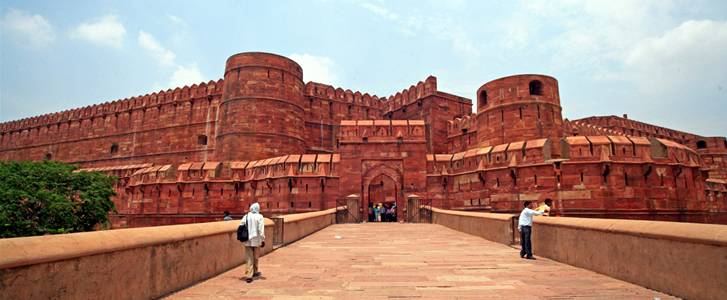
Agra Fort is a UNESCO World Heritage site located in Agra, India. The fort is also known as Lal Qila, Fort Rouge and Red Fort of Agra. It is about 2.5 km northwest of its much more famous sister monument, the Taj Mahal. The fort can be more accurately described as a walled palatial city.
Agra Fort built by Akbar in Red Sandstone when he was through with the consolidation of his power after accession to power in 1654, Agra Fort worked both as a military strategic point as well as the royal residence.
. Ever since Babur defeated and killed Ibrahin Lodi at Panipat in 1526, Agra played an important center of Mughal Empire it was in a ruined condition and Akbar decided to make it his capital and arrived in Agra in 1558 Akbar had it rebuilt with red sandstone. Architects laid the foundation and it was built with bricks in the inner core with sandstone on external surfaces. Some 1,444,000 builders worked on it for eight years, completing it in 1573.
At the end of his life, his son, Aurangzeb, in the fort, a punishment that might not seem so harsh, considering the luxury of the fort, imprisoned Shah Jahan. It is rumored that Shah Jahan died in Muasamman Burj, a tower with a marble balcony with an excellent view of the Taj Mahal.
The fort contains splendid palaces both in red sandstone and white marble built by two generations of prolific builders Akbar and later Jehangir and Shahjahan. Of the nearly 500 Akbari buildings built in the Bengal and Gujarati traditions only a few have survived, arrayed in a band on the riverfront.
Some of the exquisite structures that deserve a mention are:
Sheesh Mahal – Literally meaning ‘Glass Palace’ it was the royal dressing room adorned by tiny mirror-like glass-mosaic decorations on the walls.
The Diwan-i-Am – Which was used as a communications ground between the public and the aristocracy and once housed the Peacock Throne.
Diwan-i-Khas – A hall of private audience, it was used to welcome kings and dignitaries.
The Anguri Bagh – It houses 85 square, geometrically arranged lush gardens.
Khas Mahal – An immaculate white marble palace.
Mina Masjid – Literally meaning ‘Heavenly Mosque’ it is a tiny mosque closed to the public.
Nagina Masjid – Literally meaning ‘Gem Mosque’ it was designed exclusively for the ladies of the court.
Musamman Burj – A large, octagonal tower with a balcony facing the Taj Mahal.
Itmad ud daulah

Itmad-ud-daula has a special place in the chronicles of both history as well as architecture. This is precisely because Itmad ud Daula is the very first tomb in India that is entirely made out of Marble. This is actually a mausoleum that overlooks the River Yamuna and is a tomb of Mir Ghiyas Beg, a minister in the court of Shah Jahan.
The story of Itmad-ud-daula is an inspirational rag to riches saga. The tomb of Itimad-ud-Daulah is as interesting as the life of the person for whom it was built. Mirza Ghiyas-ud-din or Ghiyas Beg (later known as Itimad-ud-Daulah) was a poor merchant and lived in Persia (modern-day Iran). His wife gave birth to a daughter whom he wanted to abandon for he has no money to feed her but the persistent wails of the infant changed his heart. The baby girl brought a stroke of good luck to her parents, for Ghiyas Beg found a caravan that straightaway took him to the court of the great Mughal Emperor, Akbar. . After Akbar’s death in 1605, his son Jahangir became the Mughal emperor, who made Ghiyas Beg his chief minister or Wazir. Ghiyas Beg was also honored with the title of Itimad-ud-Daulah or the pillar of the state.
Jahangir fell in love with his widowed daughter who processes unspeakable beauty. She was later christened Noor Jahan and went down in the history as one of the most beautiful and artistically gifted women in the world. Jahangir conferred the title of Itmad-ud-daula or ‘Pillar of the Empire’ to his father-in-law. Noor Jahan ordered the tomb after the death of her father in 1622.
Itmad-ud-daula is a pure white and elaborately carved tomb that conforms to the Islamic style of architecture. The Indo-Islamic architecture becomes prominent because of the fusion that this tomb displays. While the use of arched entrances and octagonal shaped towers signify the Persian influence, the absence of a dome and the presence of a closed kiosk on top of this building and the use of canopies talks about the possible Indian influence. From out side, when you take a bird eye view, Itmad-ud-daula looks like a jewel box set in a garden. This tranquil, small, garden located on the banks of the Yamuna was to inspire the construction of the Taj Mahal in the later years.
Sikandra
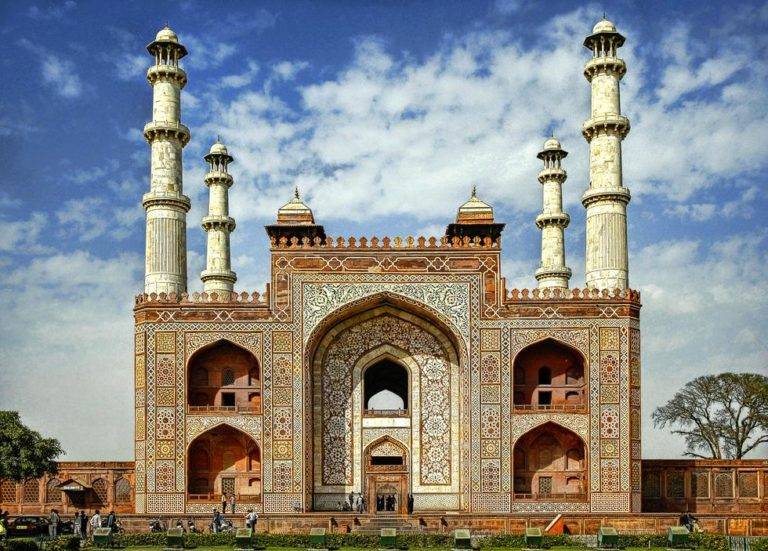
Sikandra is the mausoleum of Akbar. Akbar himself started construction of this beautiful monument. This structure has a perfect blending of Hindu, Christian, Islamic, Buddhist, Jain themes. Sikandra is named after Sikandar lodi, the Delhi ruler who was in power from 1488 to 1517.
Sikandra Fort is located in the western periphery of the city at a distance of about 10 kms from the city center. Sikandra the last resting place of the Mughal emperor Akbar. Akbar was the greatest of the Mughal emperors and one of the most secular minded royalties of his time. He was the heir to a long tradition of oriental refinement, a great patron of the arts, literature, philosophy and science. A visit to Akbar’s monument opens before one, the completeness of Akbar’s personality as completely as the Taj Mahal does of Mumtaz Mahal’s . Akbar himself planned his own tomb and selected a suitable site for it. To construct a tomb in one’s lifetime was a Tartary custom, which the Mughals followed religiously. Akbar’s son Jahangir completed the construction of this pyramidal tomb in 1613.
Although there is only one entrance in use today there exist four red sandstone gates which lead to the mausoleum complex. The decoration on the gateways is strikingly bold, with large mosaic patterns set into it. The gateway’s four minarets rising from the corners are particularly striking. Built of red sandstone, the minarets are inlaid with white marble polygonal patterns; the pleasing Proportions & Profuse surface ornamentation makes the gateways very impressive. These gateways reflect a curious hybrid of different styles of architecture-Hindu, Muslim Christian and a patent mixture of Akbar’s typical style. A broad paved causeway lead to the tomb, which has five storeys and is in the shape of a truncated pyramid. The main tomb has a unique square design which is unparalleled by all other Mughal buildings.Geometrical designs achieved by the mosaics of glazed tiles or of colored stones, predominate the tomb. The mosaic work is generally in the tass eleated style, that is, square or rectangular pieces of colored stones were assembled and arranged together to form patterns. Emperor Jahangir inlaid semi-precious stones into a hollowed depression in the white marble slab later on. Akbar’s daughters Shakrul Nisha Begum and Aram Bano are also entombed on this floor.
Some of its design features are similar to the design of the Taj Mahal built later in Agra.
The most striking feature of the place is definitely the splendid gateway with its four minarets that have been intricately carved. The striking inlay of white marble on the red sandstone is also grand. Another notable feature here is the portico in front of the grave in the basement. It is covered with beautiful stucco paintings.
This is a must visit place for all those who want to experience an environment of ultimate serenity and peace. The outlaying garden which is laid out in the Char Bagh style is yet another attraction of the place. The tomb of Mariam, Jehangir’s mother, is also located close to the imposing red sandstone building.
Fatehpur Sikri

Fatehpur Sikri is a fascinating ghost city built in the 16th century; 37 km from Agra Akbar the great, who at 26 years did not have an heir, founded this historic site.
Fatehpur Sikri He went to a saint, Shaikh Salim Chishti who lived in a city called Sikri. His blessing gave Akbar 3 sons. As a gesture, Akbar built a whole new city in Sikri. Akbar named his new capital Fatehpur Sikri or the City of Victory
.Fatehpur Sikri is one of the finest examples of Mughal architectural splendour at its height.
It was built between 1569 and 1585 and was intended to be the joint capital with Agra, but was soon deserted because the water system could not support any residents. It remained untouched for over 400 years now and its palaces are a remainder of the extravagance of the Mughals Fatehpur Sikri is the best example of the culmination of Hindu and Muslim architecture. Fatehpur Sikri Mosque is said to be a copy of the mosque in Mecca and has designs, derived from the Persian & Hindu architecture.
After this within 20 years, the capital of Mughals was shifted to Lahore
Diwan-i-Khas– Hall: Popularly known as the “Ekstambha Prasada”, the Diwan-i-Khas served as the royal chamber of Emperor Akbar. It is designed according to the Persian style of architecture and is decorated with fine sculpture and precious stones. There are 4 kiosks, which are located in the middle of the court.
Panch Mahal: The Panch Mahal ranks among the most fascinating buildings in Fatehpur Sikri. It is a five-storey building which was meant to be the shelter of the royal ladies and mistresses. The top story of the building offers a panoramic view of the surrounding area.
Tomb of Salim Chisti: The tomb of renowned Sufi saint Salim Chisti is located here. The tomb is well known for its delicate carvings and draws hundreds of pilgrims.
Buland Darwaza: It ranks among the important monuments in the place. This enormous gateway has a height of 54 meters and is largest gateway in the world. It was made in the year 1575 to celebrate Emperor Akbar’s success in conquering Gujarat and is a fine blend of Persion and mughal architecture.
Apart from these prime Attractions in Fatehpur Sikri are Diwan-I-Am, Turkish Sultana’s House, The Treasury, Daulat khana-I-khas, Palace of Jodha Bai, Hawa Mahal And Nagina Masjid, Birbal’s Palace, Sunehra Makan and The Jama Masjid.
Today regarded as one of the most important buildings amongst a list of World Heritage Structures, which has been brought forward by the UNESCO, a visit to the Fatehpur Sikri in Agra in India remains one of the fondest dreams of Indians from all around the world.


